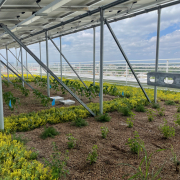Case Study: Colorado State University Rooftop Agrivoltaics
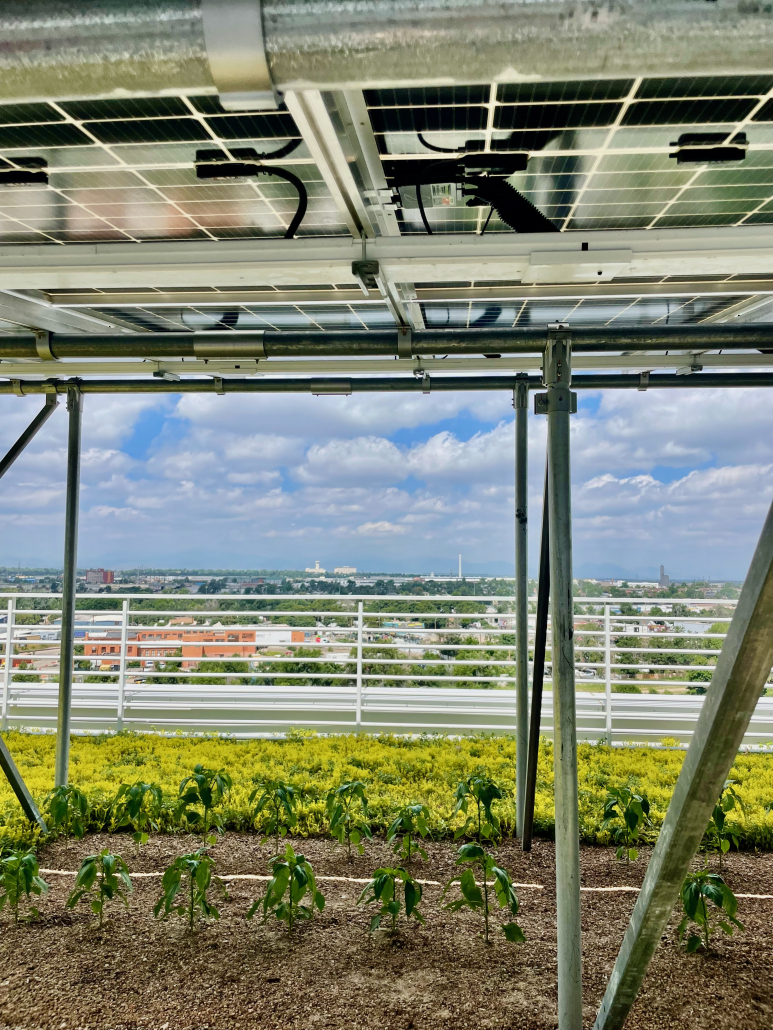
A variety of chile pepper plants grow under solar panels on the roof of Colorado State University Spur campus.
Written for the AgriSolar Clearinghouse by Allison Jackson, Colorado Agrivoltaic Learning Center
Sitting atop the brand-new Hydro Building at Colorado State University’s Spur campus is one of the world’s first agrivoltaic rooftops. The 46-kW array is a southeast-facing fixed array. Half of the array has monofacial monocrystalline panels, while the other half has bifacial panels. The roof’s infrastructure was completed in April of 2023 followed by crop planting later that month. Dr. Jennifer Bousselot is an assistant professor of Horticulture and Landscape Architecture at Colorado State University and the lead researcher for the rooftop agrivoltaics site. There are a variety of experimental plots planted under each panel type, along with a control plot in the open sun, which includes performance experiments on chile peppers, medicinal herbs, leafy greens, and sown meadow plots.
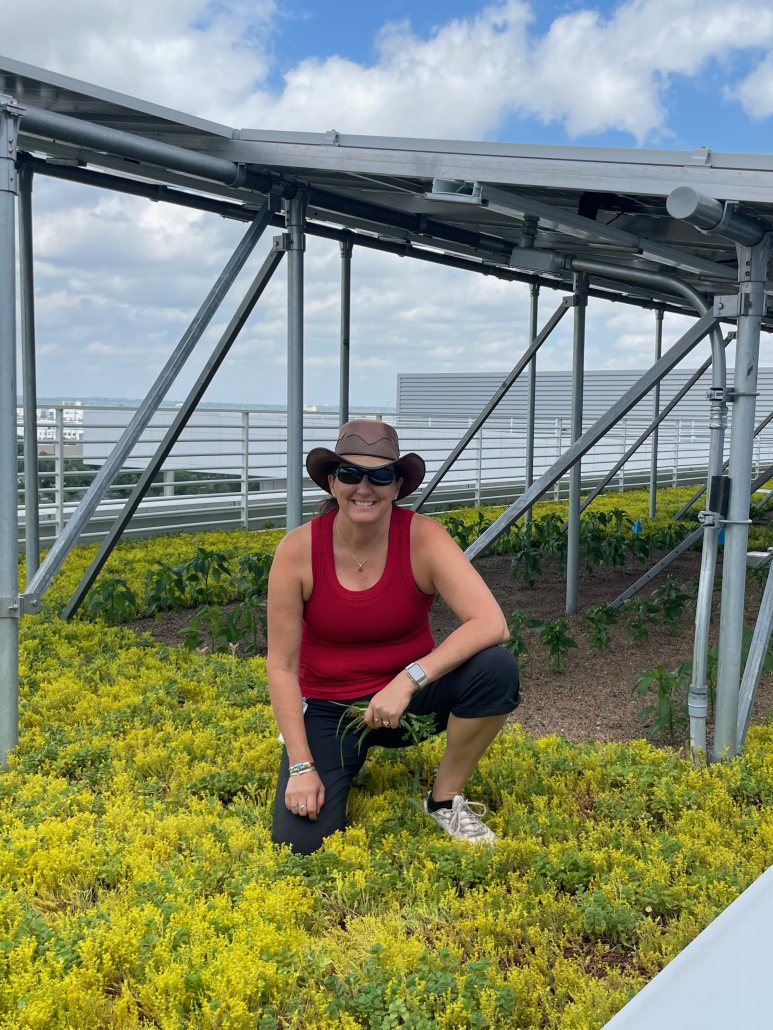
Dr. Jennifer Bouselot showcasing the sown meadow garden on the CSU:Spur Terra building.
Being situated on a rooftop comes with even more challenges than a typical agrivoltaic site. The wind loads on a roof make it challenging to install a tracking system, and the solar array requires membrane penetrations at every post or a ballast system under the soil substrate to ensure that the panels are secure. Irrigation is also trickier as green roofs have a well-drained substrate. This makes drip irrigation ineffective as water moves too quickly through the substrate profile for roots to absorb the water. The costs to locate agrivoltaics systems on rooftops is substantially increased due to higher engineering costs and the difficulties of moving and installing all the materials high in the air.
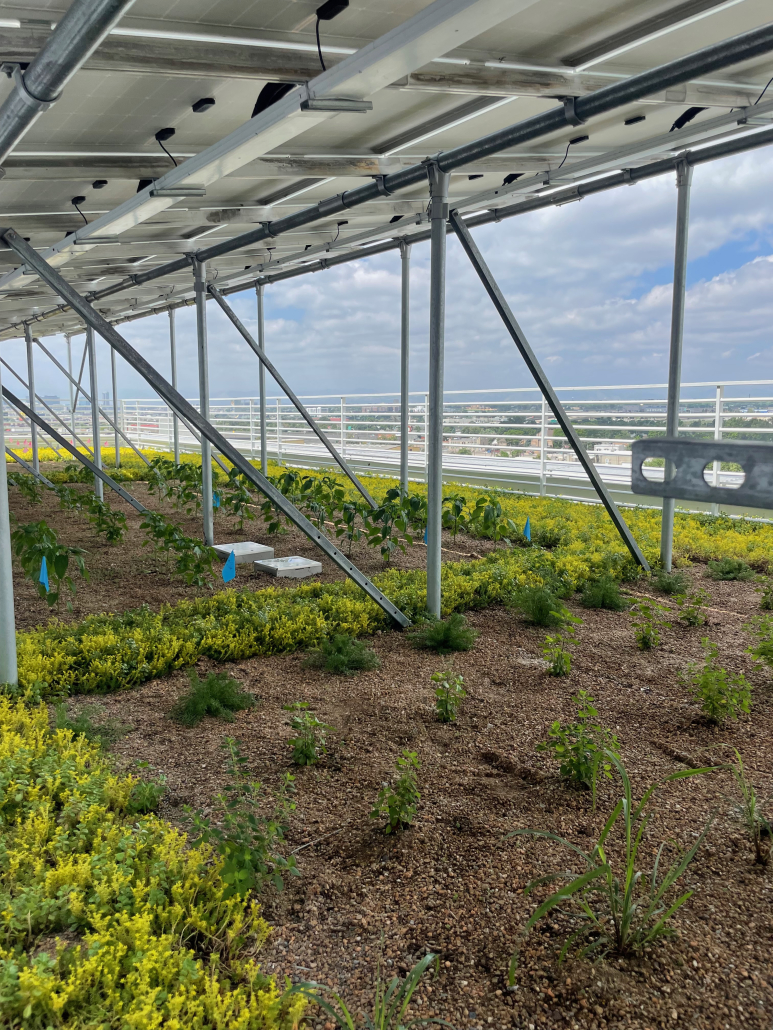
Medicinal herb and chile pepper experimental plots under the monofacial solar panels.
It is obviously early days for this agrivoltaics site, but some differences were already evident. Based on measurements, available light was higher under the monofacial panels than under the bifacial panels. In the chile pepper experiment, the agrivoltaic plants had reduction in chlorophyll concentration (due to less light), but also a reduction in stomatal conductance (a proxy for water use). The chile pepper plant height was also affected; the plants were up to 5 cm shorter in the open sun as compared to under the panels. The same also held true for the leafy green experiment, —the leafy greens (like kale, chard, arugula, spinach, and lettuce) under the solar panels were larger as compared to the full sun. The plants in the shade reached higher and created larger leaves to collect the necessary amount of sunlight.
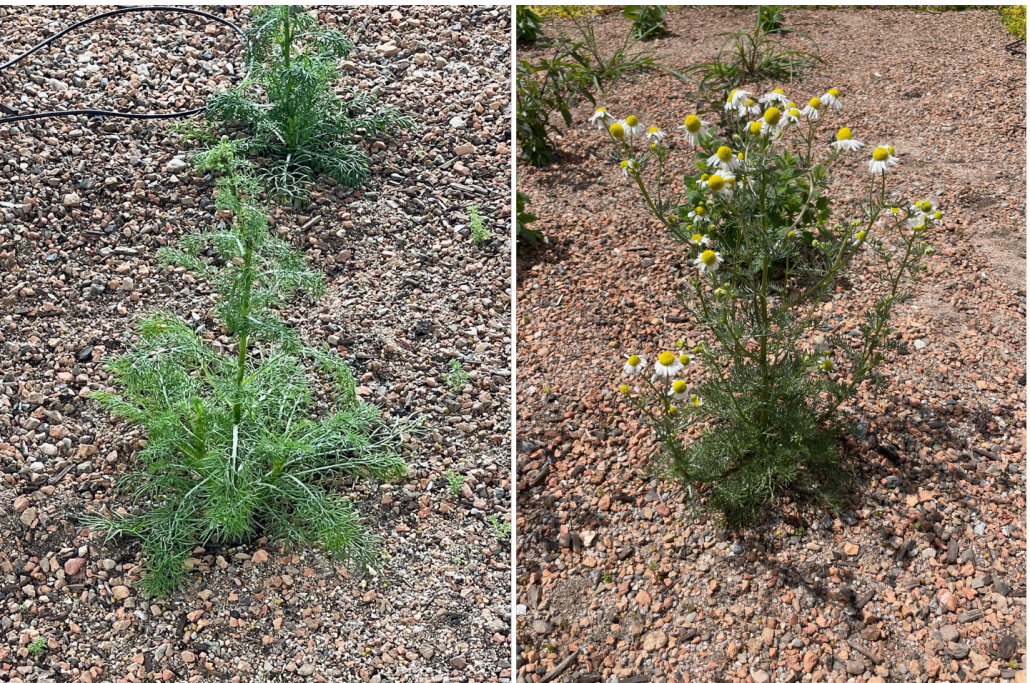
Chamomile plants in agrivoltaics system (left) versus full sun application (right).
The flowering of the medicinal herb plants seemed to be delayed for the agrivoltaic plants as opposed to the full sun plants, as seen in the photo above. On the positive side, the pigment content (a measure of potency) of the herbs was slightly higher in the agrivoltaic plants. It is only partially through the first growing season, with still more data collection to be completed, but it is interesting to note some of the early results.
Incorporating agrivoltaics on rooftops presents an innovative synergy of renewable energy and sustainable agriculture. These sites can make urban spaces not just consumers of resources, but also active contributors to both energy and agricultural production. By harnessing the power of the sun through solar panels while simultaneously cultivating edible and useful plants, this innovative approach can maximize land utilization, reduce urban heat island effects, and foster local food production.
Photos courtesy of Allison Jackson, Colorado Agrivoltaic Learning Center.

